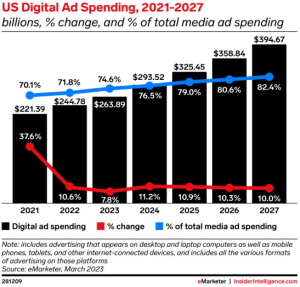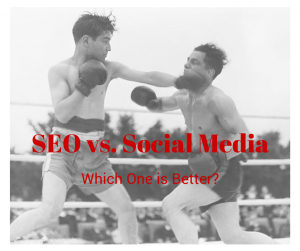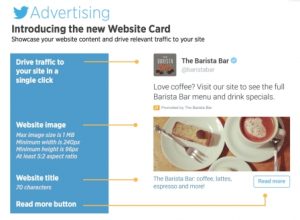Are your social media efforts engaging people?
Do you want to learn how to get audiences to respond?
Creating content that connects with your target audience makes you stand out and motivate consumers to take action.
In this article you’ll discover five ways to captivate audiences by using psychology principles.
#1: Use Stories To Connect Emotionally
In the New York Times bestseller Made To Stick, authors Chip and Dan Heath share research that reveals we’re more likely to donate when we hear the story of an individual in need rather than data about an entire impoverished area.
Even though an entire area’s suffering is likely more impactful than that of an individual, the individual’s story is appealing because we feel emotions from hearing the experiences of others, rather than raw data. People connect through hearing stories, not statistics and abstract information.

To apply this principle, you should tell a story to reach your audience’s emotions.
Your social media content can impact audiences and remain memorable if you share a personal experience, whether it’s your own or someone else’s. By creating a journey with a resolution at the end, your brand will make an emotional impact on your viewers.
#2: Answer the Question, “What’s In It for Me?”
Expressing how people can benefit from your product or service will get you increased engagement on social media.
Taco Bell’s Twitter feed socially engages its audience well with its witty and interactive tweets. Most importantly, the people behind Taco Bell’s Twitter account understand what makes people tick. Take a look at this popular Tweet:

Who wouldn’t like a free meal? Imagine what people are thinking as they watch the World Series. They’re likely hoping someone steals a base with the promise of free breakfast from Taco Bell. This keeps the brand at the top of its audience’s minds.
Taco Bell creates an image of fun and generosity, which inspires brand loyalty and helps to make the franchise relatable.
And no, you don’t have to give everyone in the country a free breakfast. There are other effective methods of letting people know what your product can do for them. Taco Bell’s promotional strategy shows that captivating the audience begins with thinking about what they want, first and foremost.
So the next time you share your brand on social media, show why it would change people’s lives.
#3: Provide Social Proof
These days, reviews and testimonials on products and services are available at the click of a button. A study was performed, involving public-service messages asking residents to use fans instead of air conditioning. Results found that telling a group that 77% of their neighbors were using fans was more effective than mentioning residents could save $ 54 a month.
See how powerful peer pressure is?
Crate and Barrel’s website invites customers to leave reviews beneath products with the option of inserting a picture. Pictures help other potential customers visualize how the product would look in a home setting as well:

There are a number of ways to create social proof: showing Facebook likes, posting testimonials, and telling your audience about how popular your product is.
The most effective social proof, though, is unmoderated positive reviews. Your followers will know that your product or service is strong enough for happy customers to vouch for you on their own account.
#4: Associate Your Brand With Authority Figures
Using an authority figure will improve the perception of your brand, whether it’s someone people trust, respect, or like.
If the person is recognized and successful in her own career, it rubs off positively on the brand. Sadly enough, the reverse is also true – if an endorser has bad publicity or is not doing well, the brand suffers too. These principles apply even if the person is not an expert or authority in the field that she is promoting.
Professional tennis player Maria Sharapova is highly sought after for endorsements due to her rise in tennis and wide social media following. As an endorser of Tiffany & Co., amongst other brands, she uses her social media platforms to display products to her followers. Maria shares a picture of a bracelet by Tiffany on her Instagram.

When people feel uncertainty or don’t know what how to act in a situation, they look towards someone else as a reference guide. Robert Cialdini’s bestseller Influence: The Psychology of Persuasion revealed that people are more likely to follow instructions when given from an authority figure. In the book, a study from Yale University found that people were much more likely to inflict pain on someone else if given instructions from someone who had the appearance of being an authority.
Asking a respected person in your industry to publicly endorse your brand can work wonders to build credibility. Can’t find an authority figure? You can build your own authority by using credibility markers, such as sharing your previous experiences, educational background, or recognition that you’ve received for your work.
#5 Build Scarcity
People want what they can’t have. Cialdini’s book Influence discussed how people value something more if it is rare.
In 1985, Coca-Cola performed an experiment on whether people preferred the traditional Coke or their newer formula. 55% of participants in blind taste tests preferred the new Coke, with preferences for the new Coke going up by 6% when the identities of the formulas were revealed. However, when the traditional formula was replaced, people preferred the old Coke.
One of the most effective ways to grab people’s attention and make them take action is to make something scarce. Amazon uses the principle of scarcity by showcasing deals that are available only for a day:

People fear the chance of missing out on something, compelling them to act. You can create the feeling of scarcity by offering to give away or sell something in limited quantities or for a brief period of time.
You can also create the impression of scarcity by selling your brand on its uniqueness, whether through your brand’s personality, emphasizing services that aren’t offered elsewhere, or highlighting advantages in the way your brand operates.
Conclusion
Social media is a powerful tool that you can use to shape the perceptions of your brand, including the way you connect to your audience, the credibility of your brand, and how your brand is presented. It often is the first point of contact with your target audience, and an opportunity to build an engaging community.
What do you think? Have you tried using these tactics to improve your social media marketing? Which psychological techniques do you find to be the most effective for your brand’s content?
Digital & Social Articles on Business 2 Community(86)







